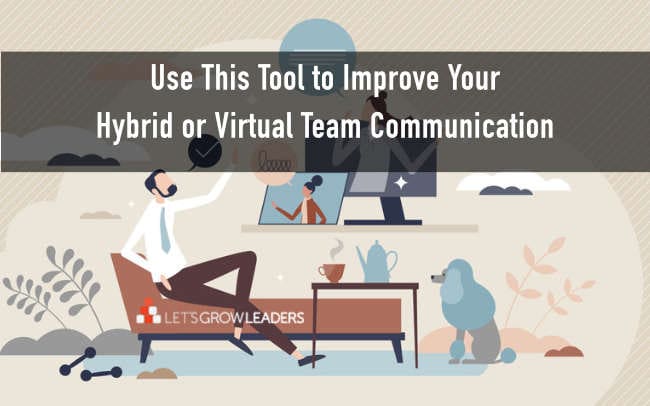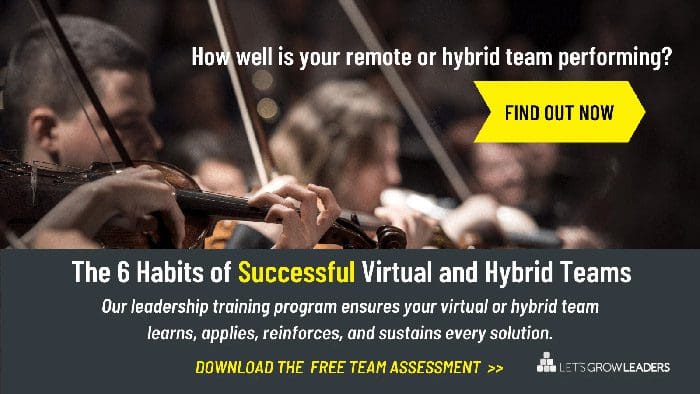The Best Hybrid and Virtual Teams Communicate About How they Communicate
As we shared in 6 habits of highly effective hybrid and virtual teams, the best hybrid and virtual teams have this in common— they work at it. They don’t take their virtual team communication for granted. It’s an ongoing, proactive conversation about expectations, what’s working well, and what’s not.
And, they talk through any frustrations before they’ve had too much time to simmer.
Because even well-intentioned, high-urgency, human-centered teammates can have widely varied opinions about what successful team communication looks like.
Perhaps you can identify with a disconnect like this:
- “If they knew this was important, why didn’t they send me an email with IMMEDIATE ACTION REQUIRED in the header?”
- “Why would they let this sit in an email, and not just Slack message me? I always respond immediately on Slack.”
- “I turn off my Slack notifications when I’m doing deep work. They should know that if something is really important, they should send me a text.”
- “Ugh. This was important. Why didn’t they just pick up the phone? How hard is that?”
- “This is ridiculous. This was an in-office day. And, I’m IN THE OFFICE. If this was that important, why wouldn’t they just come by my cube?”
- “I get that this is important, but I’m working from halfway around the world. I was asleep when the email came and by the time I could contribute my input, the decision had already been made.”
Everyone AGREES this was a highly urgent conversation. And yet, there’s a whole lot of frustration going on about why THEY communicated it THAT WAY.
Establishing Norms and Expectations Around Virtual Team Communication
The idea is to use this tool to support a conversation about how you agree to communicate during different circumstances. And then, translate that into agreed team communication norms.
Let’s Grow Leaders Communication Matrix
CONCEPT
Your team is bombarded with communication coming at them 24/7, so it’s easy to miss important messages. And, not every message is of equal importance. Some communication requires a deeper emotional investment and a more nuanced conversation. And sometimes, speed trumps everything. This tool helps you plan the best method of communication for the content, time, sensitivity, and importance of your message.
WHY this tool works:
Different types of communication require different methods. Using the most effective method ensures the most efficient communication. Investing a little bit of time upfront, establishing norms and parameters for what kinds of communication happens best where can save a lot of time and “Why didn’t you?” frustrations later on.
RESULTS
Targeted communication saves time, achieves faster results, and reduces frustration. Particularly for hybrid and virtual teams working on projects across time zones, taking some time upfront to establish clear team communication norms, helps people know exactly what to expect and where to find the information they need.
RELATIONSHIPS
Having the more challenging or emotional conversations in person (or over video) helps to minimize misinterpretation and builds trust. Respecting people’s time when communicating less urgent or lower-stakes information also makes people feel valued.
WHEN to use it:
This tool works well in conjunction with the tteam communication checklist when establishing team norms. As a leader, it’s helpful for you as you are preparing your team communication and 5×5 communication strategy.

click the virtual team communication matrix image to download a PDF of the matrix to use with your team
HOW to use the tool
An easy way to start the conversation is to provide the tool to each member of your team and give them time to reflect on what kinds of communication work best for various kinds of topics, discussions, or information, with a focus on whether you’re in a synchronous or asynchronous environment.
For example, your team may decide that if we’re working at the same time in the same location and there’s an important decision to be made quickly, we’re going to pull up for a quick team huddle.
You may agree, in that scenario, you’re not going to spend a lot of time on email threads or Slack channels. You’re going to get together, make the decision, and follow up with an email summary.
Or, you may agree that even if you are all in the office, you’re not going to interrupt one another with less urgent matters. Those will be handled via your Slack channel.
This conversation is particularly critical for virtual team communication across time zones.
If your team is in different locations at different times, and you have an important decision to make, you may agree that all the information will be communicated in a Slack thread so that everyone can weigh in and share their views during a 24 hour period, before making the final decision (for more about “who owns the decision” see our Manager’s Guide to Better Decision Making.)
This tool is just the start to get the conversation going about communication preferences, what’s working, and opportunities for streamlining communication and making it more accessible. From there, you can create norms for your hybrid and virtual team communication as you continue your growth as a high-performing hybrid or virtual team.








0 Comments